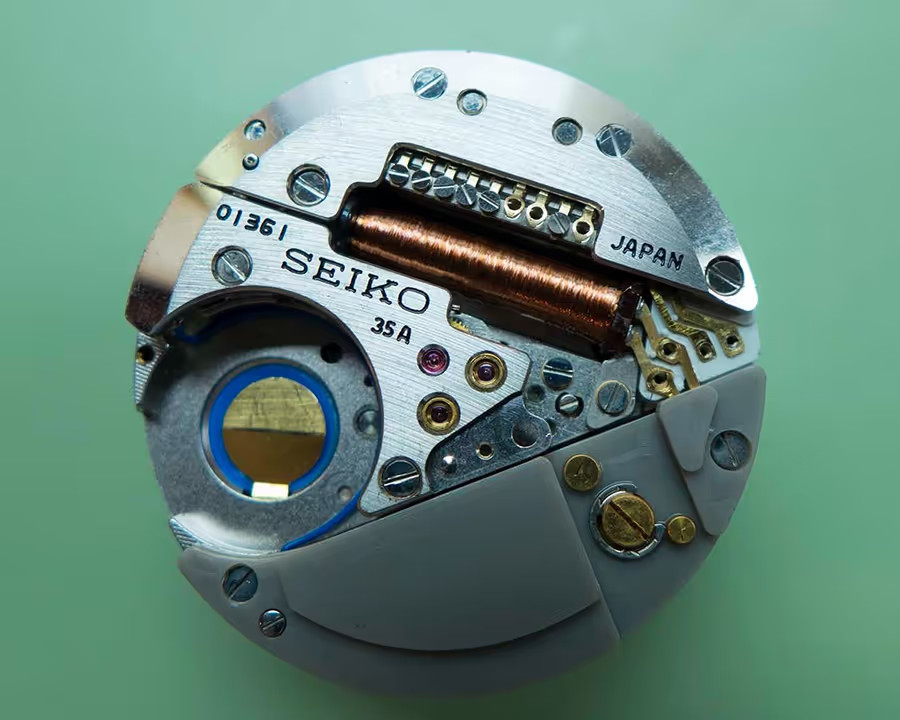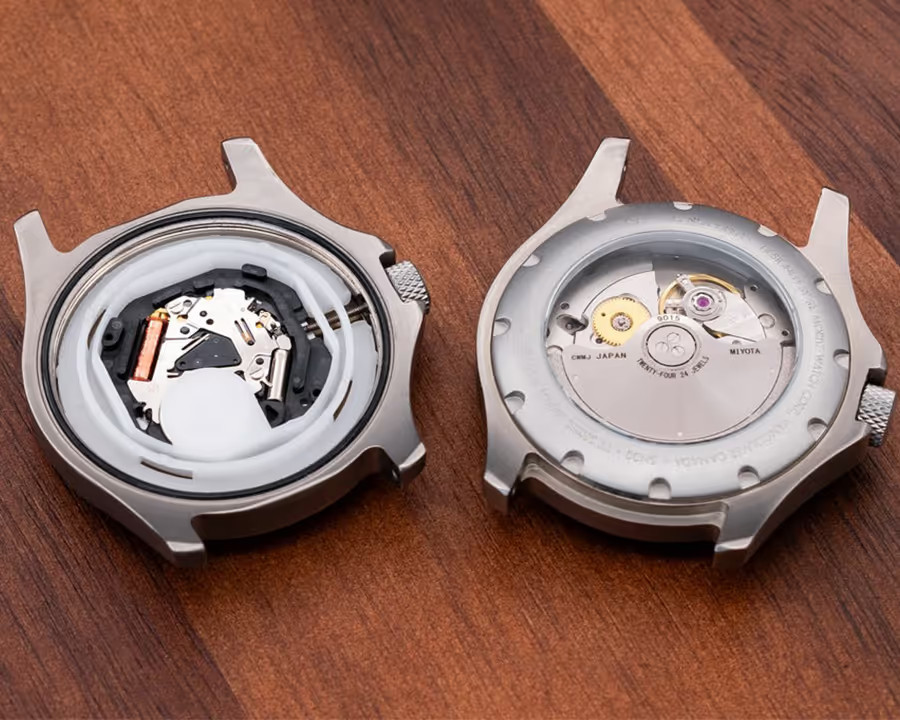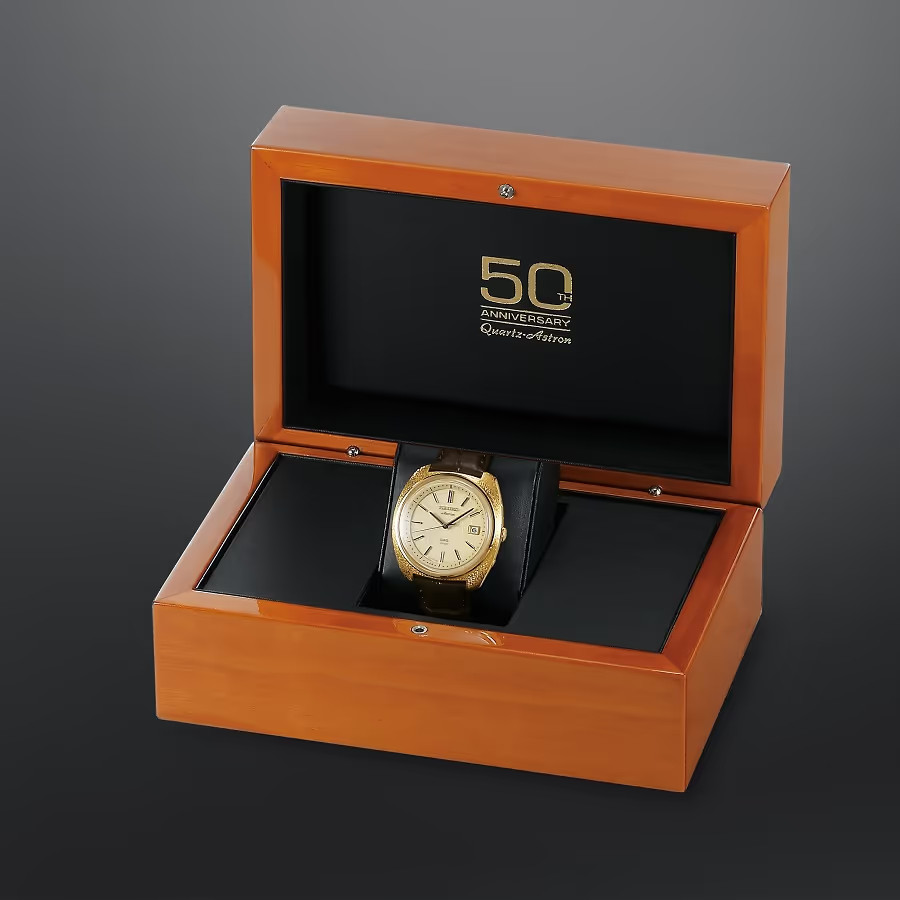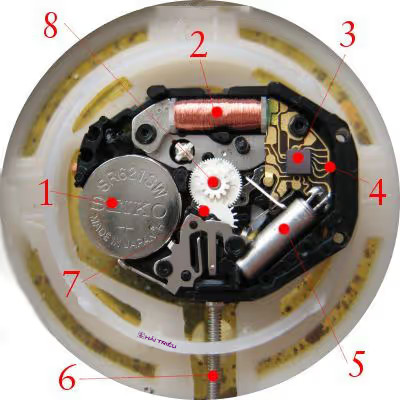Quartz watches, also known as quartz watches, are not just timekeeping devices but symbols of sophistication and perfection in design. Their emergence has caused a significant transformation in the Swiss watch industry.
What is a Quartz Watches?
A quartz watch operates based on a U-shaped quartz crystal. When placed in an electric field, this crystal oscillates and is powered by a battery, enabling the watch to function. In essence, the operation of a quartz watch relies on the battery supplying energy to the electric magnet, which stimulates the gear system to move in a certain cycle controlled by an IC control circuit.

The term “quartz” in German means “hard,” which explains why these watches are often referred to as quartz watches.
Internal Structure:
- Battery
- Electric Magnet Mechanism
- Integrated Circuit (IC)
- Circuit Board connecting the IC and other components
- Quartz crystal
- Time-setting knob
- Speed-adjusting gear
- Central shaft for mounting hands
How Quartz Watches Work:
Step 1: The battery supplies power to the quartz crystal through the electronic circuit. Step 2: The quartz crystal oscillates at a fixed frequency, usually 32,768 vibrations per second. Step 3: The electronic circuit counts these oscillations and uses them to generate continuous electrical pulses in one second. Step 4: These electrical pulses can be displayed on an LCD screen or used to control the watch hands on the dial. Step 5: The electric magnet mechanism rotates the gears. Step 6: These gears move the watch hands on the dial.

See more: 100+ highest quality fake Cartier watch
The Quartz Crisis and the Swiss Watch Industry
The quartz crisis caused a major upheaval in the watch industry, especially in Switzerland, where traditional mechanical watches had dominated the market for centuries. The emergence of quartz watches, or quartz watches, overturned all rules and posed significant challenges to traditional watchmakers.
- Historical Context
Quartz watches appeared as a perfect alternative to mechanical watches dating back to the 14th century. Switzerland had been a hub for producing high-quality products with complex automatic and handmade movements.
Seiko is believed to be the first company to introduce quartz watches, but in reality, this technology was invented by Warren Marrison in the United States in 1927. Later, Isaac Koga developed the first quartz watch model in Japan. Seiko continued to develop this technology and introduced the first quartz watch in 1959, then continued research to create wristwatch models.
- Causes
The emergence of quartz watches disrupted the Swiss watch industry. This technology offered many advantages such as mass production, lower costs, and higher accuracy compared to traditional mechanical watches.
- Impacts and Consequences
This crisis caused the Swiss watch industry to collapse, with thousands of watchmakers losing their jobs and many manufacturers going out of business. Seiko and Japanese watchmakers affirmed their position in the international market.

- Revival of the Swiss Watch Industry
Through innovation and reform, the Swiss watch industry has made a comeback with the revival of major brands such as Omega and Longines. The establishment of the Swatch Group marked a significant milestone in this process.
- Current Watch Industry
Quartz watches still dominate the market share, but mechanical watches retain their position, and smartwatches are becoming formidable competitors in the industry.
Answering Questions about Quartz Watches
- The accuracy of quartz watches comes from the quartz crystal’s ability to vibrate at a fixed frequency when an electric current passes through it. This makes quartz watches very accurate timekeepers. Although accuracy may fluctuate within a certain range (usually ±15s/month), the accumulation of errors occurs less frequently and slower than with mechanical watches.
- Quartz watches cannot maintain accurate time indefinitely for several reasons. Changes in temperature and pressure at different locations can affect the quartz crystal’s oscillation frequency, resulting in timing errors. Additionally, transmission and friction in the watch’s circuits can also cause inaccuracies.
- Compared to mechanical watches, quartz watches are much more accurate and reliable. This is because factors such as winding, lubrication, and temperature changes do not affect quartz watches as they do mechanical watches. However, with high-end mechanical watches using modern technology, errors can be reduced and may even be lower than some quartz watches.

These are important milestones in the history of the emergence of quartz watches that caused a major crisis in the Swiss watch industry. Thank you for your interest!
See more: 100+ highest quality fake Patek Philippe watch





